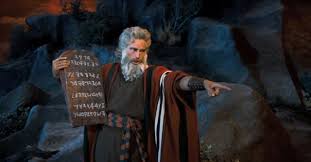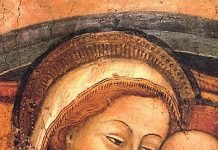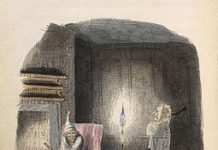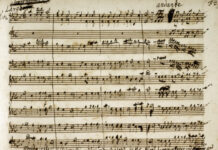(A recent review of an older film, the Ten Commandments hearkens back to a more golden, and more innocent, era of Hollywood. Much better than the recent remake with Christian Bale as a confused, slightly insane Moses, with his ‘God’ as an annoying boy speaking in hallucinatory images. Give me Charlton Heston and the burning bush anyday. Editor).
Year: 1956
Filming: Color
Length: 220 minutes
Genre: Biblical/Drama/Epic/Inspirational/Religious
Maturity: PG (for intense thematic elements)
Cast: Charlton Heston (Moses), Yul Brynner (Pharaoh Ramses), Anne Baxter (Nefretiri), Yvonne De Carlo (Sephora), John Derik (Joshua), Debra Paget (Lilia), Edward G. Robinson (Dathan), Vincent Price (Baka)
Director: Cecil B. DeMille
Personal Rating: 4 Stars
***
Some movies are so classic they should absolutely positively be seen at least one in a lifetime. With regards to The Ten Commandments, it still remains an Easter tradition set in stone for many. In spite of some far-fetched twists in the plot and hammy acting in places, Cecil B. DeMille’s “baby” has grown and thrived because it succeeded in his mission to make the Bible exciting and touched a chord for the post-war world trying to assess the true meaning of liberty.
Charlton Heston stars as Prince Moses of Egypt, a Hebrew rescued from the Nile by Pharaoh’s daughter when he was only an infant. However, his adopted mother is the only one who knows this, and goes the extra mile to conceal it from her brother, Pharaoh Seti, and the royal court. Favored by Seti and despised by his adopted cousin, Ramses, Moses wins great military victories and builds magnificent cities all while romancing with the seductive princess Nefretiri.
But his lavish lifestyle comes to a grinding halt when a Hebrew swaddling cloth reveals his true identity. Unbeknownst to everyone else, he goes down to the mud pits and works like a slave to be with his “people”. In the course of his time there, he strangles an Egyptian taskmaster for trying to misuse an Israelite woman, Lilia, and for beating her lover, Joshua. He is apprehended and brought before Pharaoh’s throne to the shock of all. He then boisterously declares that he is favor of freedom for the slaves and is sent into exile in the desert.
When he seems doomed to die, he is rescued by Bedouin shepherdess, Sephora, and her bevy of younger sisters, all overjoyed at finding a real live man! He gradually adapts to his life as a member of the tribe and tends his flocks beneath Mount Sinai, considered to be inhabited by God. He eventually marries Sephora, even though he is still mooning over Nefretiri who had thrown herself at his feet during his trial before Pharaoh and vowed she would never forget him.
One day Moses runs into Joshua, who has escaped from captivity and come to hail him as the Chosen One who will lead the Children of Israel out of bondage. Moses is skeptical at first, but then he spies a burning bush that is not consumed by the flames on top of the Holy Mountain and decides he must see it more closely. He has a mystical experience with God, and acknowledges his mission to lead his people to the Promised Land. Coming down from Sinai, he is no longer himself.
In Egypt, Moses and his brother Aaron go head-to-head with now Pharaoh Ramses, his old rival, who has married Nefretiri and has a small son. Pharaoh, needless to say, isn’t particularly moved when Moses tells him to “Let my people go!” As a result, the famous plagues descend on Egypt. At the same time Nefretiri tries to romantically reconnect with Moses, but he spurns her, and she in turn hardens Pharaoh even further against him.
When the final deadly plague slays the first-born of every house in Egypt, including the royal palace, the Hebrews are finally allowed their freedom. But Pharaoh is soon goaded into changing his changing his mind by the embittered Nefretiri who has lost both her old love and her child. A climactic chase ensues, ending up at the shores of The Red Sea and the parting of the waters for the Israelites. But the conflict is not over. While Moses ascends Mount Sinai once more to receive the Commandments of God, the Children of Israel will come up against their own worst enemy: their sinful nature.
The Ten Commandments is the Biblical epic from the golden era of the 1950’s. DeMille was an expert at serving up a feast for the eyes, and this was his ultimate extravaganza of panache and panorama. It’s a richly detailed drama, laden with sub-plots and character analysis as well as visual splendor. For the time period, the special effects were nothing less than stunning. While we might now be excused for cracking a smirk when the cartoonish fire descends from the sky or the green fog machine emits its lethal substance, or the gelatin Red Sea is poured out of monstrous cartons in reverse, it would be nothing less than pompous for us to sneer.
Beyond these imaginative efforts, there are some truly grand scenes including the mass Exodus of the Children of Israel. It is so well choreographed, impressive in its scale but also intimate in the way it focuses on individuals, such as a little boy herding ducks and a woman giving birth to a baby and old man dying and asking for his shrub to be planted in the Promised Land. The subsequent chase by Pharaoh and his charioteers is also a masterpiece.
One clip that always stays with me is when Nefretiri gazes out of her balcony as we see the full might of the Egyptian host charge across desert, shimmering from the heat and golden sand. Of course the race between the walls of jello-water may be a tad hokey, but it is still pretty exciting. One more note I have to make involves the color of the sky at intense moments. The eerie blood-red color or storm-black hew it sometimes takes on is deliciously surreal.
This film is chock full of artful symbolism, like the moment when Nefretiri is playing Hounds and Jackals with Pharaoh Seti and the head of her game piece flies off, skidding across the marble floor and landing at Ramses’ feet. Also there is the scene when Ramses tries to discredit Moses with his father, casually laying weights on a scale as each charge is leveled against his brother. Accused on giving the slaves too many privileges, Moses slams down a brick on the other side of the scale, demonstrating the fact that he has gotten his slaves to build a city, whereas Ramses has not.
The bulk of the main acting is pretty good. Charlton Heston shines once again as the man-against-the-odds, going from glory to griminess before reemerging as liberator. As in equally famous role as Judah Ben-Hur, he rather block-headedly refuses to make use of the opportunities afforded him by his exalted position, even spurning Seti’s offer to forgive him providing he vow he would not lead the Hebrews in rebellion against him. Instead of using tact or grace in his wording (which I think could have helped his people much more from the get-go!), he declares he definitely would lead “his people” rebellion after all!
The thing that’s a bit irksome in this is his instant disavowal of his loyalty to Egypt and the Pharaoh, even though he was been raised in the court since an infant. Not only is he breaking Pharaoh’s heart and putting his adopted mother in grave danger for exposing her cover up, but he’s also dooming his girl-friend to marry a man she despises. Great, so he’s Hebrew by blood, but does that change all his past perceptions and beliefs and sense of Egyptian identity in a twinkling?
Interestingly, it should also be noted that he was just utilizing slave labor a few scenes back, and he could not have been totally unaware of their intense suffering. Now, just because he’s hung out in the mud pits for a few days, he’s suddenly transformed into a zealous abolitionist. The transition is somewhat jarring, and his “decision” to strangle Baka as a slave instead of firing him as a prince boggles my brain to no end!
In true Hollywood tradition, the whole thing is blown up for dramatic effect, and even I will admit it is a bit unrealistic. One way or another, it does help propel him on his search for the divine. In an interesting twist, Heston is voice of God coming from the burning bush, since he thought interlocutions may well come out that way. A bit cheesy the way they slowed down his voice to sound almost like an alien, but interesting concept nonetheless.
His counterpart, Yul Brynner, makes a wonderfully agile villain that you almost find yourself admiring at given times. He may be a power-hungry slave-driver who miscalculates when he defies the Hebrew God, but he has a certain noble, authoritative stride to his step, even when he finds his world crumbling around him. Judging from the way he beseeches his Egyptian god of the underworld to restore the life of his son, he seems to have a certain sincerity and humanity that honestly seems to run deeper than Moses at this point in the film (more to come on that point). By the end of the film, Ramses seems to have experienced enlightenment the hard way when he admits, “Moses’ god is God.”
The character of Nefretiri, played by Anne Baxter, is probably one of my least favorite in the film. First of all, I think she throws things off in the way of plot and historical accuracy. Yes, she is your typical sword-and-sandal seductress fare, and I don’t suppose the epic would be quite complete without her. But she’s basically a sex symbol with a pathetic lack of depth who finds herself in a worn cycle of being misused while in search of true love. Actually, one of the main emotions here character draws from me is pity.
Needless to say, the whole little love triangle with Moses, Ramses, and Nefretiri is a fabrication, and I think the character of Moses comes off the worse for it. When he is Prince of Egypt, he is all gung-ho about their passionate love affair. But when he returns to Egypt years later as “The Messenger of God”, he treats her with extreme coldness. It seems he has totally discounted the time she flung herself at his feet, even when he was bound in chains about to sent out to die in the desert.
Granted, she is making a nuisance of herself trying to rekindle their old romance, but I would think it would be more instinctive to feel a deep compassion for his former flame and treat her more sensitively. She is a lost soul seeking love in all the wrong places, and instead of helping her understand that she is worthy of being loved in a deeper way than mere physicality, he comes off as almost flaunting his new position as a Holy Man with a sanctimonious air.
One love triangle apparently wasn’t sufficient, so they decided have Nefretiri and Sephora come head-to-head over Moses as well before being mutually disillusioned by his role as prophet. “You lost him when he went in search of his God,” Sephora explains. “I lost him when he found his God.”
We do seem to “lose touch” with Moses as soon as he descends from Mount Sinai. This is a pity, since it deprives us of getting into his head during the most pivotal points of the movie. That having been said, I like the way these two female leads are contrasted with poetic language to explain that inner beauty is the most important of all. “Love is not an art to us; it is life to us”, Sephora tells Moses. But it seems that Moses himself has forgotten the point that love is the most important point, and the portrayal of his self-righteousness in the face of Ramses leaves one with the impression that Pharoah’s heart has been hardened more by Moses than by anyone else.
Nothing is mentioned in the Bible or elsewhere about Ramses planning to kill all the Jewish first-borns during the “let-my-people-go” crisis. It would have been more accurate and reasonable if the film had just hearkened back to the killings of infants when Moses was a baby and indicated that The Angel of Death was avenging that travesty than creating a new one for sensationalism purposes. Dark sections of the Old Testament such as this are always difficult to portray, but twisting the story doesn’t help.
This also leads to another awkward moment: Nefretiri goes the extra mile to save Moses’ son, but Moses doesn’t show her much compassion when her own son is sentenced to die, nor does he make any major moves to try to save him. Furthermore, he seems to have no pity on Pharaoh himself when he is broken and beaten by his son’s death, and goes on to loudly proclaim jubilation over the liberation of the Jews in his presence. I suppose I felt it came off as a bit…self-obsessed? Or perhaps it seems that Moses is the type who cares more about trumpeting his new-found identity than the heart its meaning…which should be show God to others, even in the grittiest of circumstances.
But to his credit, Moses does welcome in his adopted Egyptian mother, Bithia, when she seeks shelter among the Israelites after being released from her own captivity by Ramses, and he stands up for her in the face of his loyal yet complaining sister, Miriam. Further, one cannot doubt that he has a lot on his mind, trying to liberate a whole nation from bondage, etc. He seems to be following his God-given mission to the best of his ability under the circumstances, and I do appreciate his recognition that God does reside in the hearts of all men, not just upon the mountain of Sinai.
Another interesting element of the film is the speculation over whether the plagues might have had a natural causation, such as a volcanic eruption. As a Catholic, I have no problem with this idea, since I believe that God often works through secondary causes, including the workings of nature. That he might have used these things to free His Chosen People from slavery is fully plausible. Another theory not explored in this film is the idea that the Red Sea was actually the Reed Sea (more like a river), and that the tides rolled back at the perfect moment to allow the Israelites to cross. Then, in another example of miraculous timing, the tide could have flooded back with such a strong current that the chariots of pharaoh were washed away. These theories are certainly worthy of consideration, and in my mind do nothing to lessen the miraculous nature of the events.
Two of the worst miscasts have to be the casting of Vincent Price as Baka and Edward G. Robinson as Dathan for this film. Put simply, they doom themselves by being themselves…with turbines! Shades of John Wayne as Kublai Kahn in The Conqueror, to be sure. But that’s another gruesome tale. And of course these two incongruent odd-balls would make a run for the same less-than-impressed girl…oy vey!
This unfortunate female, Lilia, serves as a representation of the Nation of Israel – “a water lily in the mud”.” Loved by Joshua, bringer down of walls, and misused by creepy miscasts, she almost dies as a result of the green mist but is saved by Joshua who paints lamb’s blood over Dathan’s door. She is later almost sacrificed at the altar of the golden calf but is rescued by Moses in the nick of time. Innocence, defilement, and redemption – the cycle is emblematic of The Chosen People in The Old Testament.
The Ten Commandments, for all its eccentricities and quirks, remains a masterpiece of storytelling and spectacle that cannot be repeated, and watching it is an Easter tradition for thousands, including myself. I think the transcendence of it can be best captured in the scenes where Moses is struggling through the desert being poured out, bled dry, and left literally in the dust. It is a precursor to Christ’s 40 days in the desert, and emblematic of all those who must be beaten down before they can find God and their calling in life by following His Word. As Pharaoh famously says: “So let it be written; so let it be done.”
Avellina Balestri (aka Rosaria Marie) is one of the founding members and the Editor-in-Chief of The Fellowship of the King, a Catholic literary magazine featuring the works of homeschool students, homeschool graduates, and beyond. She reads and writes extensively about the history and culture of the British Isles, taking a special interest in the legends of Robin Hood and the stories of the Catholic English Martyrs. She also sings, composes, and plays the penny whistle and bodhran drum, drawing inspiration from Celtic music artists such as Loreena McKennitt. She also spends her time watching and reviewing classic movies, networking with a host of zany international contacts, and last but certainly not least, striving to deepen her relationship with the Ultimate Love and Source of Creativity, and share that love and creativity with others.












